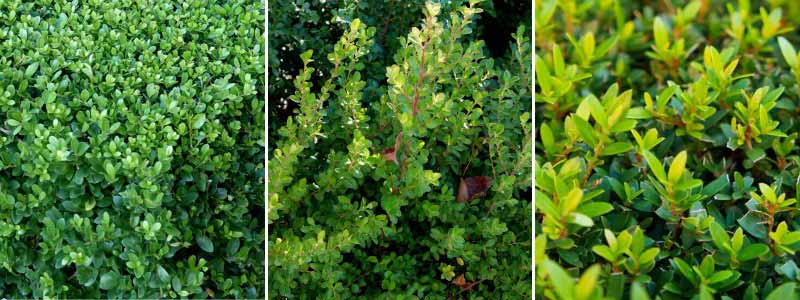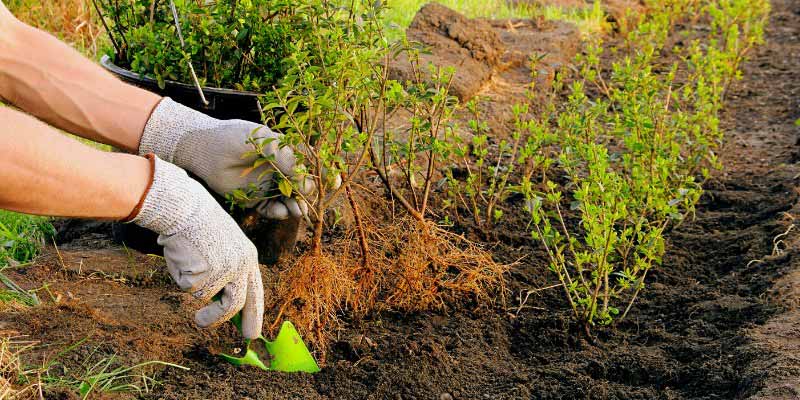With its small evergreen, leathery leaves and ease of pruning, boxwood is a typical shrub of French formal gardens. It is often used for edging or in low hedges to define beds. However, its vulnerability to pests and diseases, particularly box tree moth, encourages exploring other options. Alternative bushes, equally evergreen and easily shaped but more resistant, can replace boxwood in a hedge. Discover them below and find some planting tips.
Which plants for which uses?
Neat and formal or more informal, it is quite possible to compose a well-structured hedge almost identical to a boxwood hedge. Evergreen, hardy, relatively slow-growing, and also very tolerant of pruning, there are good candidates to replace diseased boxwood attacked by box tree moth. Among them:
- Crenate holly (Ilex crenata) is often preferred for its appearance similar to boxwood and its disease resistance. Like boxwood, it gives structure to the garden through the seasons. Its dense, compact habit makes it suitable for creating small to medium hedges. Its fine evergreen foliage, dark green or golden depending on variety and nicely glossy, recalls that of boxwood. Hardy well below -15°C, it grows in all our regions if sheltered from scorching sun in any moist, lime-free soil.
- Myrsine africana or African boxwood is an interesting alternative to replace boxwood in mild climates (Mediterranean and Atlantic regions) due to its sensitivity to cold (down to about -8°C for an established plant). It forms a small bush with a compact, rounded habit, clothed year-round with small, very glossy dark green leaves. It grows a little faster than boxwood and, as it tolerates pruning perfectly, it suits the creation of a low-maintenance small hedge. Virtually problem-free, it adapts to any drained soil, even calcareous, in sun or shade.
- common myrtle (Myrtus communis) is another excellent alternative to boxwood in mild climates as it shows moderate hardiness down to about -8°C. It is appreciated for its small aromatic, glossy leaves, green or variegated. Its charm is at its height in summer when foliage is studded with a multitude of small white flowers. Unaffected by disease, floriferous and fragrant, Myrtus communis is perfect to provide structure in a dry garden, in a small clipped or informal hedge. It prefers light, drained, poor soils and a spot sheltered from the sun’s harsh rays.

- Osmanthus delavayi is another evergreen bush capable of replacing boxwood in temperate regions. It forms a compact, rounded shrub covered with small, leathery dark green leaves. In spring it literally disappears under a cloud of jasmine-scented white flowers. It makes a good fast-growing screen and can reach 3–4 m in height if left unpruned, which makes it ideal for hedges. Hardy down to -10°C, it will appreciate a spot well sheltered from cold winds, especially north of the Loire. It grows in any moist, fertile, well-drained soil, even calcareous, in sunny or partly shaded positions.
- For a low hedge or a bright border even in winter, small varieties of Japanese spindle (Euonymus japonicus) will be magnificent. With their glossy leaves and dense habit, they are another interesting option to replace boxwood. The Euonymus japonicus 'Microphyllus Albovariegatus', for example, is a charming, very bushy variety whose small glossy foliage, green margined with white, recalls variegated boxwood.
- Other options such as privets also offer good density and withstand frequent pruning, making them suitable for structured hedges, like Ligustrum vulgare 'Lodense', extremely hardy and very easy to grow. Its compact, bushy habit makes it an excellent candidate to replace boxwood in a low hedge.
For more choices and information, consult our advice sheet: "Which bushes to replace boxwood?"

When to plant these shrubs?
Planting is ideally done in autumn or early spring. These periods allow plants to acclimatise and develop their roots before summer or winter. Avoid planting during frost or extreme heat.
How to plant them to form a hedge?
Boxwoods are usually used in low hedges, spaced 25 cm apart, or in tall hedges spaced 80 cm apart. Spacing between alternative bushes depends on the species chosen and desired hedge height. As a rule, for a dense hedge, plant bushes at a distance equal to half their mature width.
- Start by marking out the hedge line. Stretch a string line along the desired position to achieve a straight border
- Dig a trench along the string line as wide and deep as a spade
- Fork and loosen the soil along the full length of the hedge
- Place well-rotted compost mixed with soil into the planting hole, optionally adding gravel or coarse sand for drainage
- Place each bush in its planting hole, ensuring top of rootball is level with ground
- Backfill with soil mixed with compost and firm slightly
- Water thoroughly
- Spread a mulch to keep soil cool and limit weed growth
- Six months after planting, it is often recommended to lightly prune young shoots with shears to encourage branching and dense growth from the base. Afterwards, maintain your hedge by pruning once or twice a year in late winter and early autumn.

































Comments